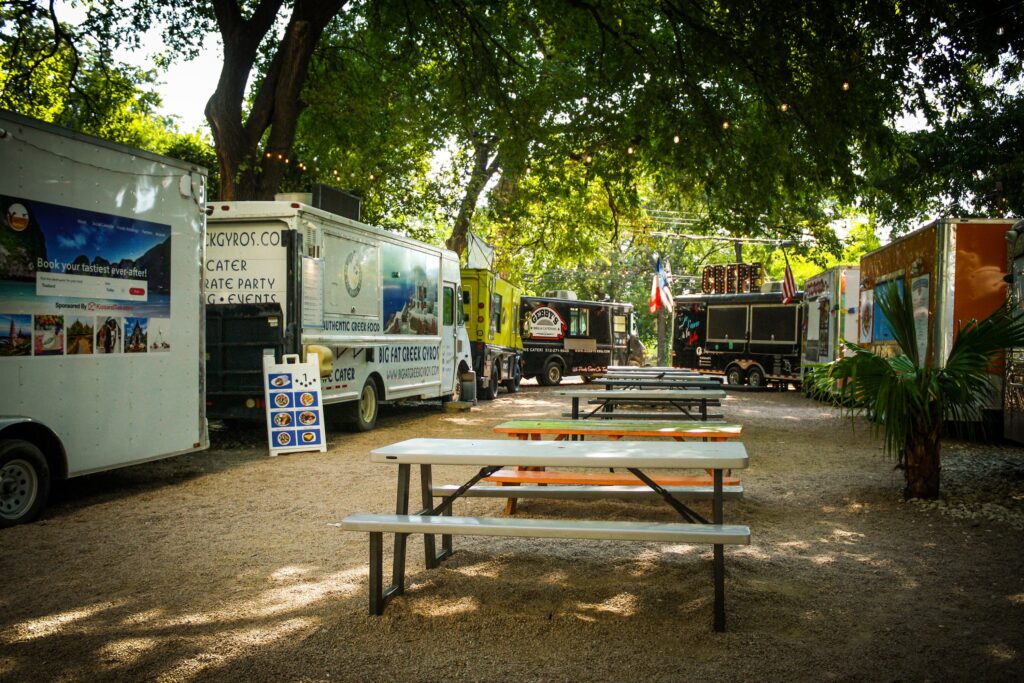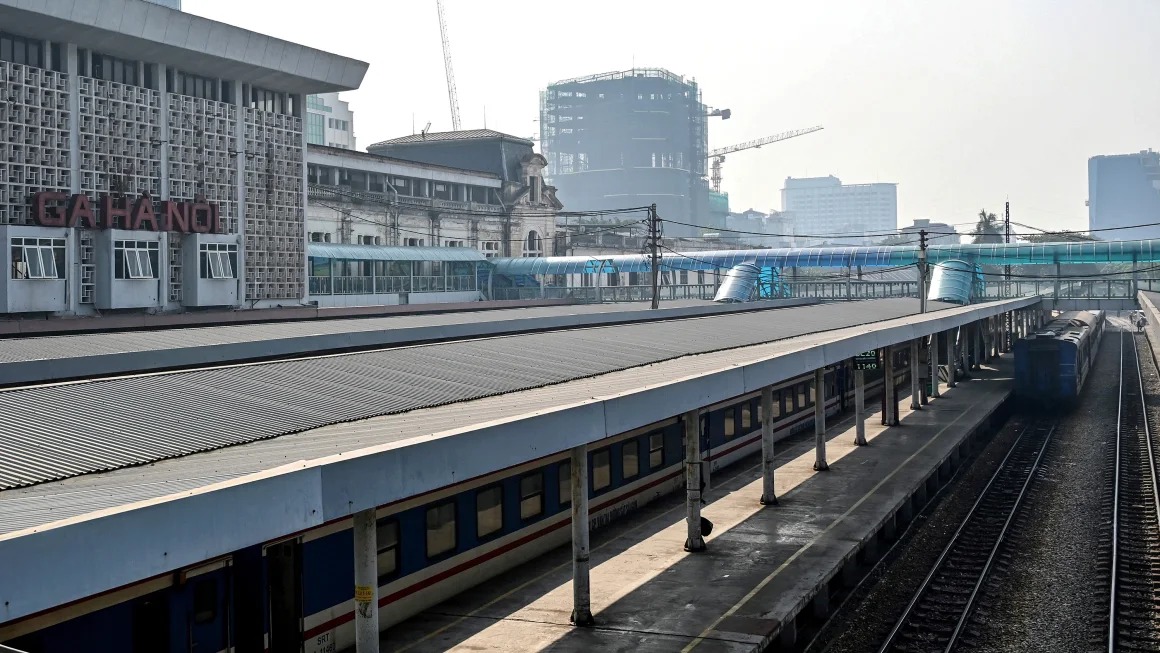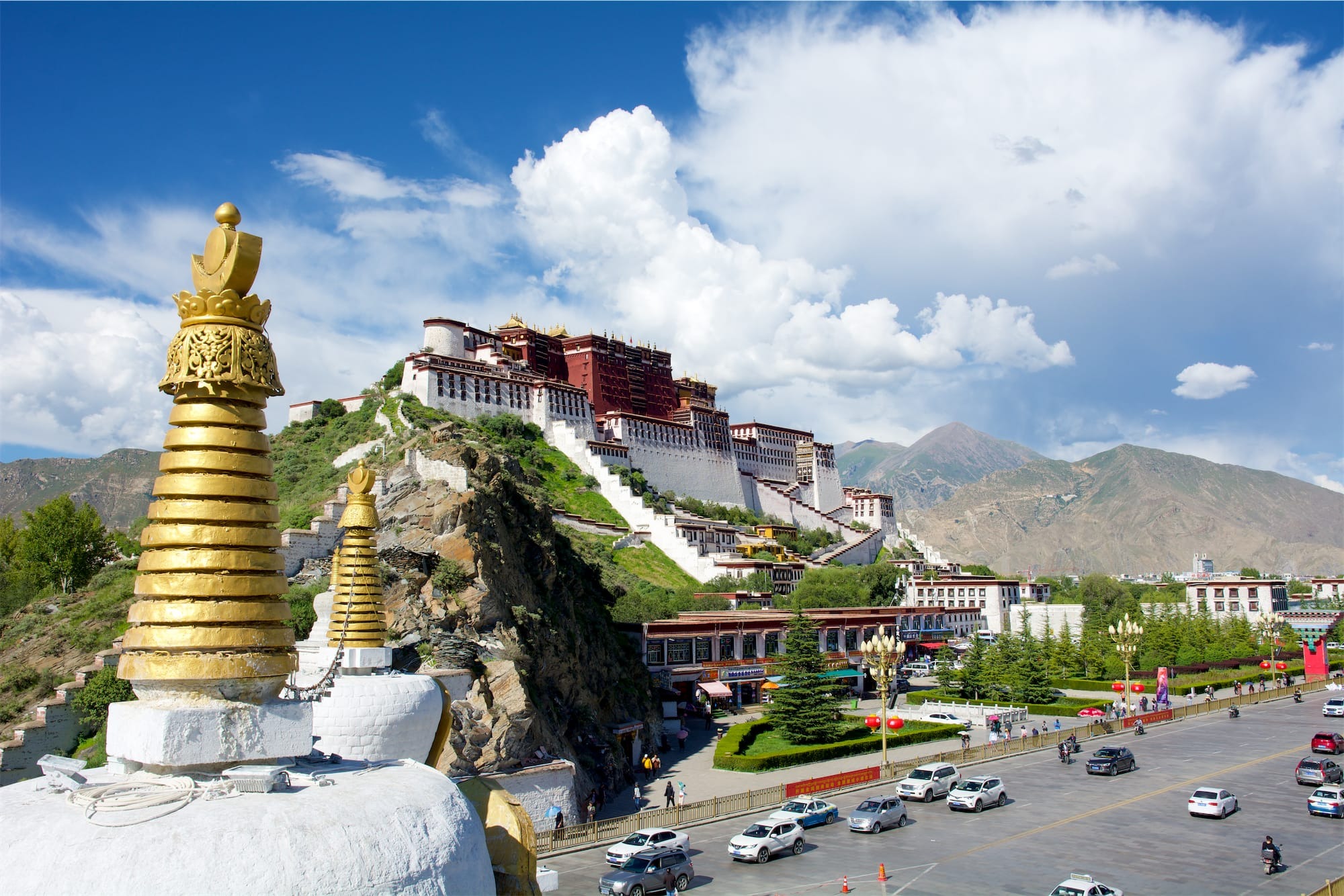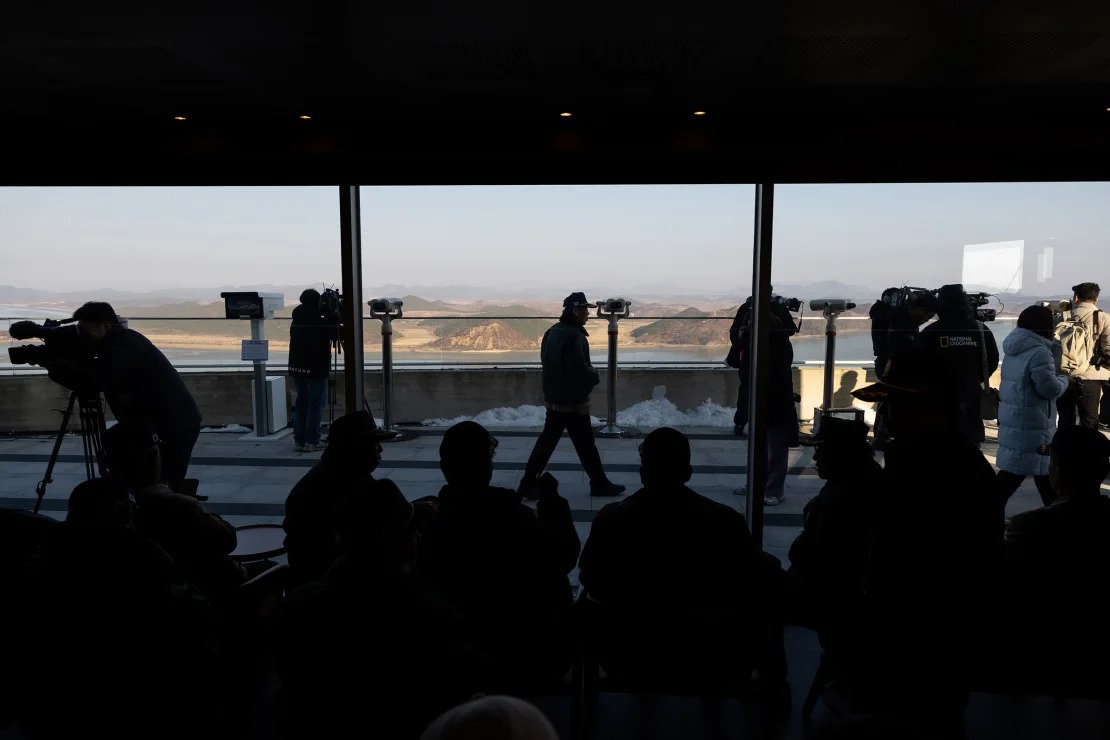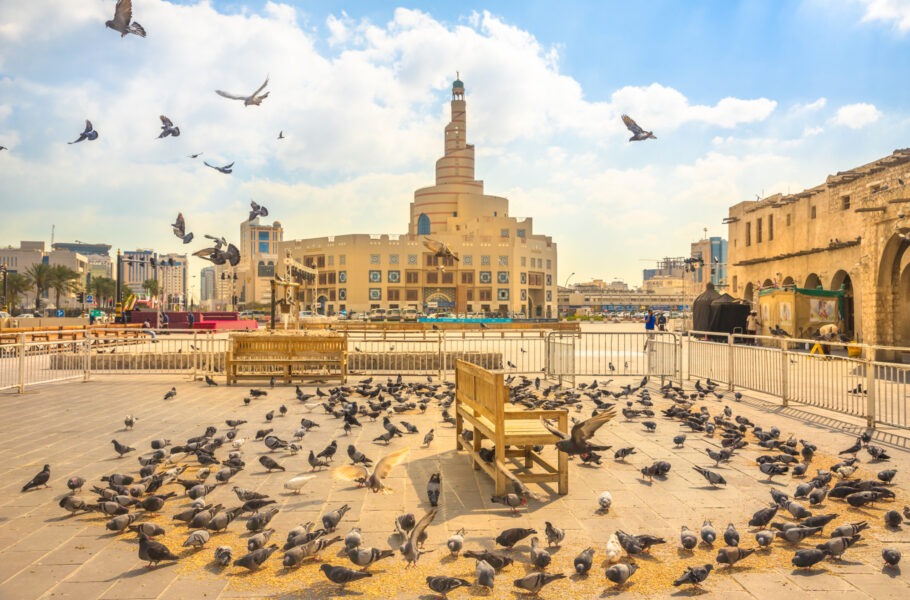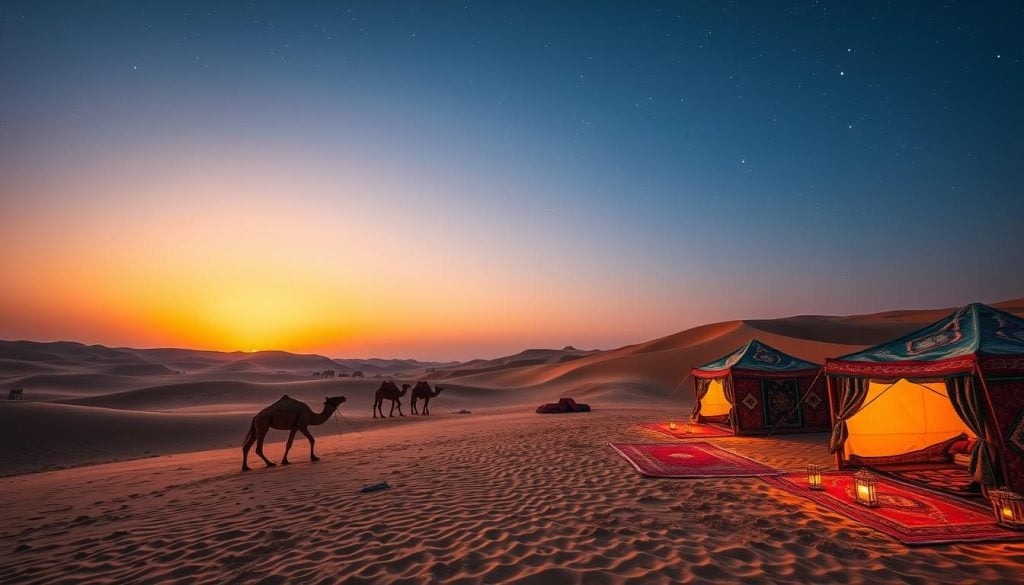Botswana, a gem of Southern Africa, is renowned for its stunning landscapes, vibrant wildlife, and rich cultural heritage. This four-day itinerary takes you on an adventure through the country’s highlights, combining safari experiences, local culture, and unforgettable memories.
Day 1: Arrival in Gaborone and Exploring the Capital

Begin your Botswana journey in Gaborone, the nation’s capital. As the gateway to this magnificent country, Gaborone offers a blend of modernity and tradition.
Morning:
- Land at Sir Seretse Khama International Airport, and check into a cozy hotel like Peermont Mondior Gaborone or a local guesthouse.
- After refreshing, start your day with a visit to the Three Dikgosi Monument, a towering tribute to Botswana’s three founding fathers. This site provides insight into the country’s history and independence journey.
Afternoon:
- Head to Gaborone Game Reserve, one of the smallest yet most accessible reserves in Botswana. Here, you can spot wildlife like warthogs, impalas, and a variety of bird species.
- Enjoy a local lunch at Bojanala Waterfront, sampling traditional dishes like seswaa (shredded beef) and bogobe (maize porridge).
Evening:
- Visit Mokolodi Nature Reserve for a sunset game drive. This reserve is perfect for a relaxed introduction to Botswana’s wildlife, including giraffes, zebras, and cheetahs.
- Return to your accommodation and prepare for the next day’s adventure.
Day 2: Maun – Gateway to the Okavango Delta
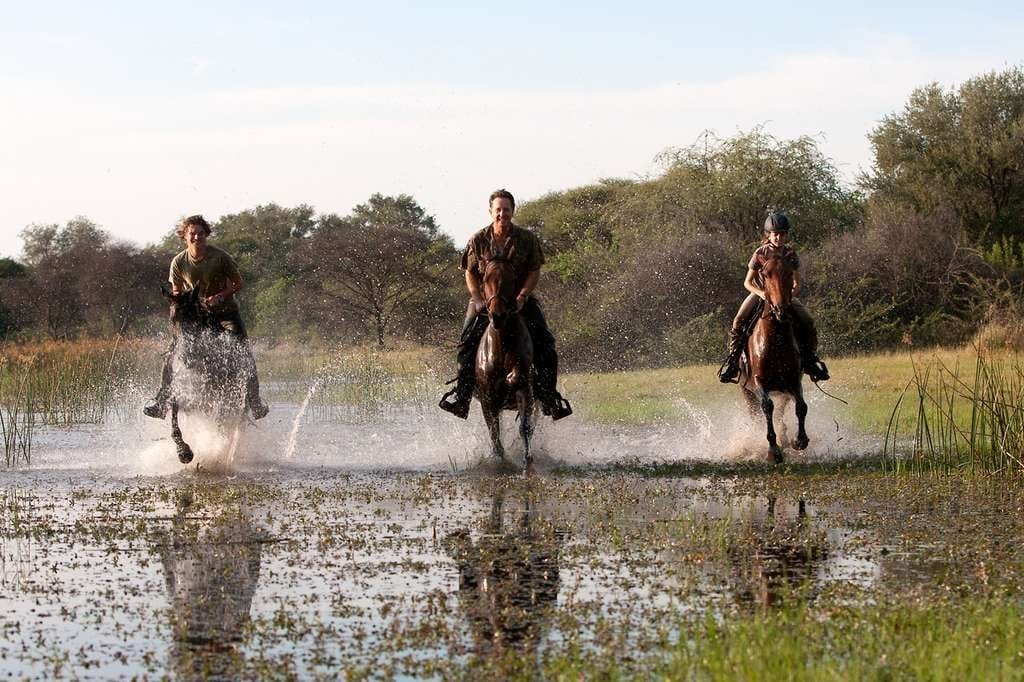
Maun, the entry point to the legendary Okavango Delta, is the next stop on your journey.
Morning:
- Take an early flight from Gaborone to Maun.
- Upon arrival, check into a lodge like Thamalakane River Lodge, which offers beautiful views of the Thamalakane River.
- Spend the morning exploring Maun’s cultural scene, including a visit to the Nhabe Museum, which showcases artifacts and art from local tribes.
Afternoon:
- Embark on a traditional mokoro canoe ride into the Okavango Delta. This serene experience allows you to glide through tranquil waterways surrounded by lush vegetation and abundant wildlife.
- Keep your eyes peeled for hippos, crocodiles, and a plethora of bird species.
Evening:
- Return to your lodge for a delicious dinner. Indulge in Botswana’s cuisine while soaking in the tranquility of the delta.
- If you’re up for it, enjoy a night safari or simply stargaze under Botswana’s clear skies.
Day 3: Safari in Moremi Game Reserve
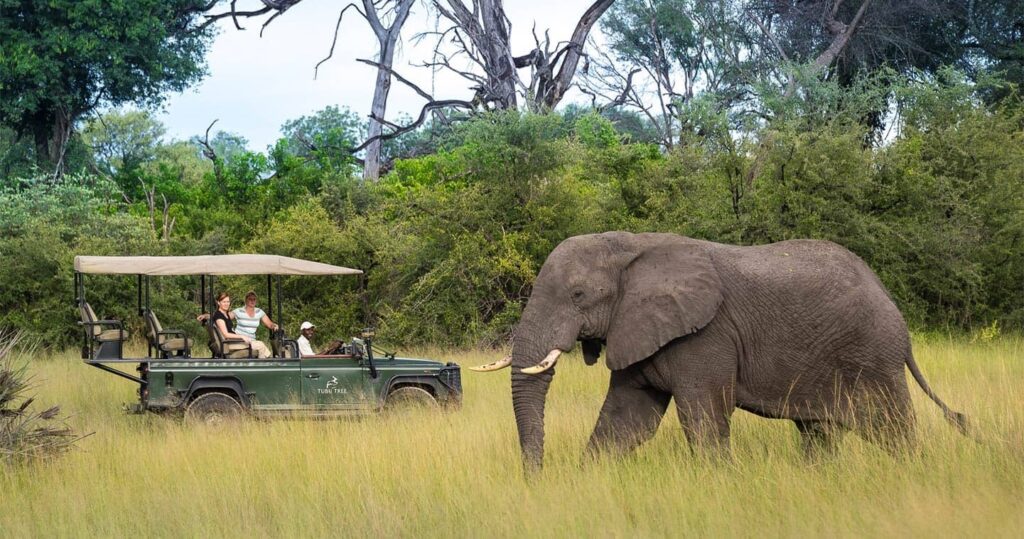
The Moremi Game Reserve, part of the Okavango Delta, offers one of the best wildlife experiences in Africa.
Morning:
- Depart early for a full-day guided safari in Moremi. The reserve is home to the Big Five, along with wild dogs, leopards, and countless other animals.
- Marvel at the diversity of landscapes, from mopane woodlands to floodplains.
Afternoon:
- Enjoy a picnic lunch in the heart of the reserve, surrounded by nature’s beauty.
- Continue your safari, visiting areas like Xakanaxa Lagoon or Khwai River, known for excellent game viewing.
Evening:
- Return to Maun and unwind after an exhilarating day. Many lodges offer traditional storytelling or performances by local groups, giving you a glimpse into Botswana’s rich culture.
Day 4: Chobe National Park – The Land of Giants

End your trip with a visit to Chobe National Park, famous for its large elephant population.
Morning:
- Fly to Kasane, the gateway to Chobe National Park.
- Start your day with a game drive through the park. The early hours are ideal for spotting elephants, lions, buffaloes, and antelopes.
Afternoon:
- Savor a riverside lunch at the Chobe Safari Lodge, offering panoramic views of the Chobe River.
- Embark on a boat safari along the river. This unique experience lets you observe hippos, crocodiles, and elephants as they gather at the water’s edge.
Evening:
- Enjoy your final sunset in Botswana while cruising along the Chobe River.
- Head back to Kasane for your return flight or extend your stay to explore neighboring attractions like Victoria Falls.
Tips for Traveling in Botswana
- Pack wisely: Bring lightweight clothing, sunscreen, and insect repellent.
- Respect wildlife: Always maintain a safe distance from animals.
- Stay hydrated: Botswana’s climate can be warm, so drink plenty of water.
- Support local businesses: Buy crafts and souvenirs from local artisans to contribute to the community.
Botswana’s breathtaking landscapes, incredible wildlife, and welcoming culture make it an unforgettable destination. This four-day itinerary offers a perfect blend of adventure and relaxation, ensuring you experience the best this remarkable country has to offer. Whether it’s the tranquility of the Okavango Delta or the grandeur of Chobe National Park, Botswana promises memories that will last a lifetime.





